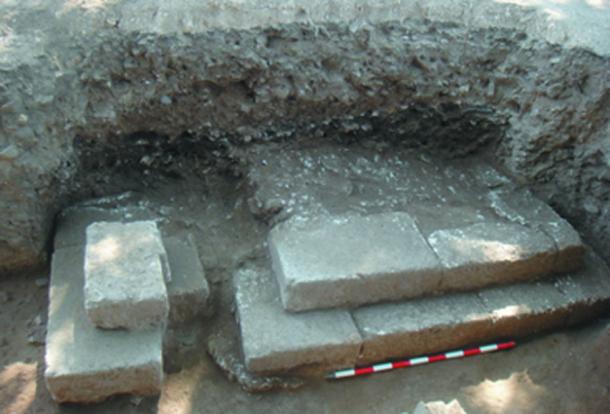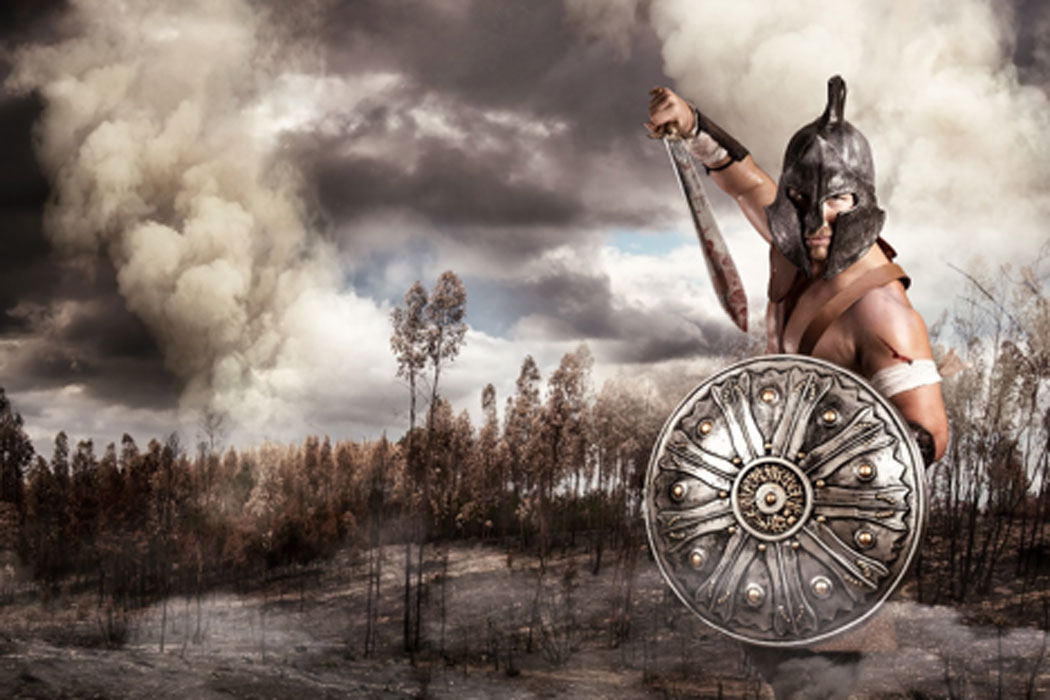25 Ancient Gold-Filled Warrior Tombs Discovered in Spain
Archaeologists excavating in Spain have discovered 25 tombs of suspected warrior aristocrats containing hoards of artifacts and gold. The tombs date back around 2,600 years and hundreds of relics have been recovered, along with over 400 animal bones, suggesting that animal sacrifice was part of the funerary rites.
The Iberian Peninsula, which today comprises Spain, Portugal, Andorra, small areas of France, and Gibraltar, was first populated with hominins about 1.2 million years ago and this timeworn territory is said to have hosted the controversial last stand of the Neanderthal people. The region contains equally impressive Paleolithic art, as is found in the caves of southern France. This traditional seat of the earliest civilizations in Western Europe became a strategic colonial position for its mineral rich earth.
Placing the new discovery in context, Tom Moore and Xosê-Lois Armada’s 2012 book Atlantic Europe in the First Millennium BC: Crossing the Divide says “The earliest evidence for an emergent aristocracy in the northeast of the Iberian peninsula can be seen in the appearance of burials of armed individuals, anthropomorphic stelae, metal feasting sets, and, finally, tombs which became cult foci”.

Several archaeologists work in the graves found in Alarcos. (Universidad Castilla-La Mancha / Fair Use)
The New Discoveries
A team of archaeologists excavating in Castilla-La Mancha, in the central part of the Iberian Peninsula which occupies most of the southern sub-plateau, have told Spanish media about their incredible discovery of 25 gold laden tombs which they think might have belonged to an “ancient Iberian prince and aristocrats”.
This all began in 2013 when a team of archaeologists and historians including María del Rosario García Huerta, Francisco Javier Morales Hervás, and David Rodríguez González began investigating the necropolis of Alarcos which led to their discovery of 25 tombs of Iberian warrior aristocrats located in an ancient Iberian city dating from the end of the 6th century BC.

Alarcos Hill. On the left, location of the Iberian site of discovered tombs. (Universidad Castilla-La Mancha / Fair Use)
Origins and Contents Of The Tombs
The archaeologists recovered “320 objects” in the tombs, with nine percent of them being crafted from gold. The specialists are theorizing that one tomb might have belonged to a prince “because of the large blocks of carved stone used to build it”. Dr Rodriguez said, “it can’t be a coincidence that the majority of the richest tombs in the Alarcos necropolis ascribed to aristocratic warriors are from this precise period or after”.
- 4,700-Year-Old Tooth Provides Insight on the First Farmers of the Iberian Peninsula
- Experts Investigate a Long Forgotten Iberian Ship that Sank off the Spanish Coast
- When a 2,000-Year-Old Iberian Settlement was Unearthed, The Remnants Confirmed a Tragic Story of Bravery, Death, and Suicide

Tomb number eleven. (Universidad Castilla-La Mancha / Fair Use)
An article in El Pais says the archaeologists’ new discoveries provide “first-hand the habits of the Oretani tribe that lived on the Manchego surface”. Two of the tombs belonged to women buried with weapons and one tomb contained in excess of “450 sheep bones” which indicates that animal sacrifice was part of the burial ritual and ceremony, according to the researchers.
The Oretani tribe are believed by some to have spoken an Iberian language, but others claim they spoke a Celtic language similar to the Celtiberians.

Falcatas found in Alarcos tombs, the dreaded Iberian swords. (CC by SA 3.0)
Digging Into The Ancient World
The hill of Alarcos is located on the left bank of the Guadiana River and it is one of the most spectacular sites in Ciudad Real Province, which measures some 54 acres (22 hectares) and practically churns out knowledge of our past from the Bronze Age right through the Roman and Visigoth periods up to the late 8th-century Muslim invasions of the Iberian Peninsula.
The researchers said the necropolis of Alarcos might hold the valuable resting place of a prince who fought against Carthaginian general Hamilcar Barca in the 3rd century BC. David Rodriguez is a Professor of Prehistory at the University of Castilla-La Mancha and he told Spanish media outlet El Espanol that “researchers still had to establish the role those buried played during Hamilcar’s campaign in ancient Iberia”.

Tomb of the Iberian prince found in Alarcos. (Universidad Castilla-La Mancha / Fair Use)
A 2017 Ancient Origins article tells the entire story of the battles of Hamilcar Barca, who was a “charismatic Carthaginian leader” and father to the famous Hannibal. Appian of Alexandria wrote that the Oretani tribe remained independent until the late 3rd Century BC, when their powerful King Orison was defeated at the Battle of Helicen in 228 BC.
Top image: Ancient warrior (Luis Louro / Adobe Stock)
By Ashley Cowie

















